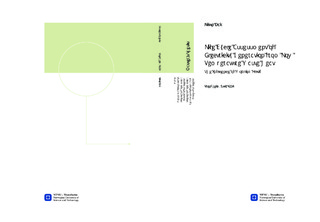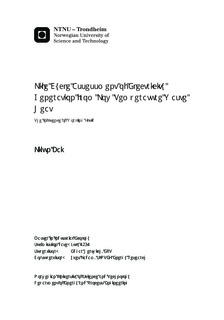| dc.contributor.advisor | Hertwich, Edgar | nb_NO |
| dc.contributor.advisor | Ladam, Yves | nb_NO |
| dc.contributor.author | Bai, Lijun | nb_NO |
| dc.date.accessioned | 2014-12-19T11:49:31Z | |
| dc.date.available | 2014-12-19T11:49:31Z | |
| dc.date.created | 2012-11-08 | nb_NO |
| dc.date.issued | 2012 | nb_NO |
| dc.identifier | 566525 | nb_NO |
| dc.identifier | ntnudaim:7230 | nb_NO |
| dc.identifier.uri | http://hdl.handle.net/11250/234889 | |
| dc.description.abstract | In the metallurgical industry and in refineries and process industries, there is significant amount of waste heat, it is a challenged field to do the research for producing electricity from the energy of waste heat. Traditionallay, Organic Rankine Cycle(ORC)is used for generating electricity from low temperature heat source. Recently researchers are focusing on the supercritical Rankine cycle which uses CO2 as working fluid for which is more environmental friendly working fluid, possilbe reduced size and better utilization of lower temperature heat source.Currently this technology is under development and there is no manufacturing of this technology that can be observed. In this Master's thesis, the overall environmental impacts caused by the CO2 supercritical cycle will be evaluated:1. What are technologies available for producing electricity from low temperature heat?2. What is the electricity that can be generated from a given amount of heat and what type of equipment is needed for this?3. What are the environmental and resource impacts of this type of equipment, based on analyses of similar types of equipment?4. what is the environmental benefit from energy generation comparing with other fossil and renewable electricity production? 5. A brief economic analysis cosidering the waste heat electricity generation | nb_NO |
| dc.language | eng | nb_NO |
| dc.publisher | Institutt for energi- og prosessteknikk | nb_NO |
| dc.subject | ntnudaim:7230 | no_NO |
| dc.subject | MSINDECOL Industriell Økologi | no_NO |
| dc.subject | Environmental Systems Analysis | no_NO |
| dc.title | Life Cycle Assessment of Electricity Generation from Low Temperature Waste Heat: The Influence of Working Fluid | nb_NO |
| dc.type | Master thesis | nb_NO |
| dc.source.pagenumber | 91 | nb_NO |
| dc.contributor.department | Norges teknisk-naturvitenskapelige universitet, Fakultet for ingeniørvitenskap og teknologi, Institutt for energi- og prosessteknikk | nb_NO |

